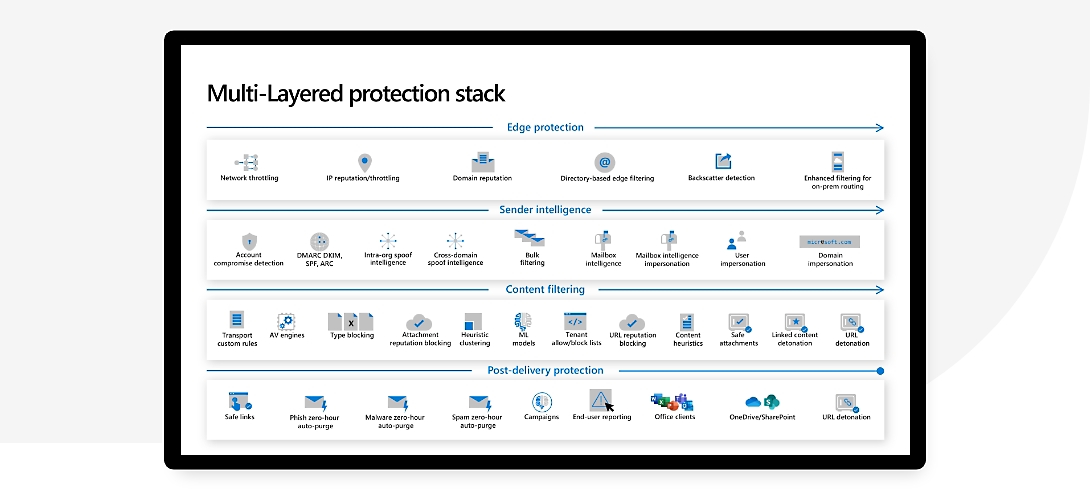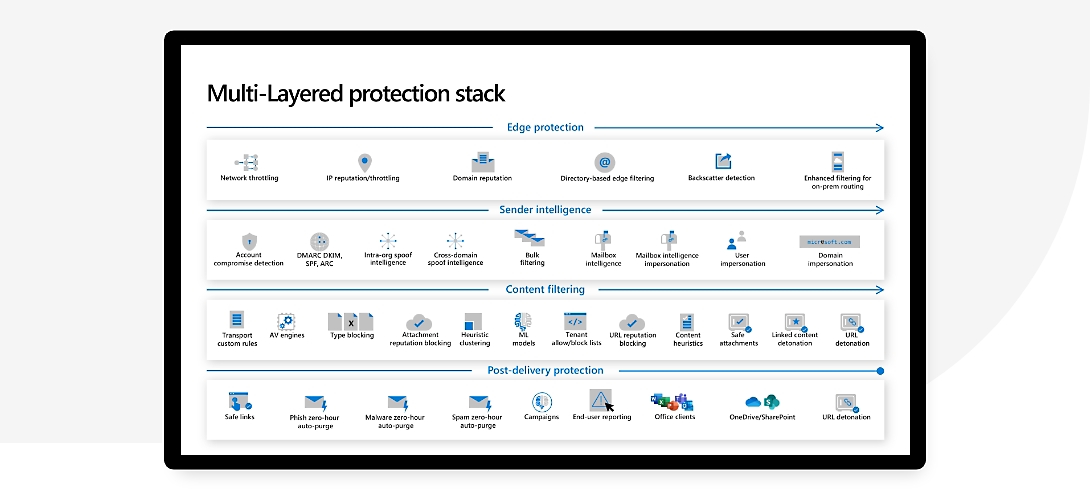Bulk Email Deliverability - Gmail and Outlook’s 2024 Guidelines and Enforcements


Bulk Email Deliverability – Gmail and Outlook’s 2024 Guidelines and Enforcements
In 2024, 16% of marketing emails failed to reach their intended inboxes. According to EmailToolTester.com, and 15 Email Service Providers (ESPs), an average of 10.5% of these emails landed in spam folders, while the remaining 6% bounced back.
While marketers are constantly trying to personalise campaigns and test different email service providers (ESPs) to reach inboxes, ISPs (Gmail and Outlook) on the other side are continually updating their spam filters and enforcing stricter policies on what gets delivered.

Even if emails escape these spam filters, they might still end up in the “Promotions” tab. In 2024, about 37.74% of delivered emails landed in Promotions, while only 57.8% could make it to the Primary Inbox.
While many articles on the Internet offer advice on improving email deliverability, they often overlook the recent updates and evolving policies of Internet Service Providers (ISPs). A case study from Seventh Sense highlights how conventional techniques like Mail merge can backfire in 2024 due to ISPs directly flagging large-volume email campaigns as spam.
Therefore, Seventh Sense devised a solution to adjust their email sending frequency to match human rates, resulting in a remarkable 93% improvement in email deliverability. This resulted in a 178% increase in website page visits from email marketing.

This post will help you explain the latest updates from ISPs like Gmail and Outlook. We’ll break down how spam filters evolve and give you practical tips to optimise your bulk email campaigns for better deliverability.
ISP Email Deliverability Updates — Timeline:
To better understand the impact of recent ISP email deliverability updates, let us first understand the timeline of Bulk Email Marketing Guidelines. We will focus on the legacy (conventional) practices (pre-2022) by the marketers and then explore in detail the current updated guidelines (2023-24) from various ISPs.
Legacy Bulk Email Marketing – ISP Guidelines (2021-22):
- Google (G-Suite/Gmail): Google had announced a stronger focus on AI for spam filtering in Gmail. This stressed the need for marketers to prioritise content relevance, implement authentication protocols such as Sender Policy Framework (SPF), DomainKeys Identified Mail (DKIM), and Domain-based Message Authentication, Reporting & Conformance (DMARC), and avoid spammy tactics.
- Microsoft (Outlook): Microsoft Outlook emphasised the importance of a good Sender (domain) Reputation for reaching inboxes. A positive domain reputation means lesser bounce rates and better engagement metrics (opens, clicks) while following permission-based email practices.
In essence, between 2021 and 22, ISPs placed an onus on marketers to understand and adopt authentication protocols, avoid spammy content, and maintain a strong sender reputation.
Post-2022 saw ISPs take proactive measures for bulk email marketing and campaigns. This proactive shift is evident in Google’s enforcement of mandatory authentication protocols and Gmail’s introduction of engagement-based inbox tabs (promotional and social), aiming to drive most marketing emails to Promotional or Spam boxes.
Updated ISP Guidelines (2023-24): Microsoft and Google Bulk Email Marketing Enforcements
Responding to the ever-evolving cyber threats, specifically via spam Emails, the recent updates and guidelines from various ISPs have underscored the importance of a comprehensive, multi-layered protection approach for email security.
Fundamentally, this means a shift from solely relying on the sender’s reputation to establishing robust defence mechanisms, spanning from the network’s edge to post-delivery actions. For example, Microsoft Defender for Office 365 exemplifies this approach with its powerful multi-layer protection stack, ensuring that every phase of email handling is secure. Take a look:

By this multi-level spam defence strategy, Microsoft Defender for Office 365 has ensured protection against various email-based threats. A recent Forrester report highlights how Microsoft’s Defender stack has decreased the time to investigate threats by 92% and an overall 95% reduction in time to block malicious links.
Understanding these technological changes, email campaign marketers must align with the measures while optimising their email campaigns to maximise reach and engagement.
Now that we have explored the ISP security stack let’s understand the updated norms from ISPs for bulk Email Deliverability:
-
- Who gets classified as a Bulk Sender? According to Google, a bulk sender is any email sender that sends close to 5,000 messages or more to personal Gmail accounts within 24 hours. Messages sent from the same primary domain also count to the 5,000 limit. If senders meet the above criteria at least once, they are permanently considered bulk senders, and this status does not have an expiration date.
- Spoofing and ISP guidelines: Spoofing is when a sender sends an email with @Gmail (From header), but the mail was not sent from @gmail. This is a common form of email abuse by spammers. In their recent update, Google mandates that Bulk senders that spoof gmail.com will start getting notifications about temporary failures. (explained in next section)
- Spam rates and ISP guidelines: ISPs expect the senders to limit daily spam rates below 0.1% and should prevent spam rates from ever reaching 0.3% or higher. Otherwise, the bulk sender remains ineligible for mitigation and won’t be eligible for any actions that could help improve their deliverability.
- One-Click Unsubscribe and ISP guidelines: Starting June 1, 2024, all bulk senders must implement one-click unsubscribe in all their commercial and promotional messages, while the Transactional messages are excluded from this clause. The Unsubscribe headers must meet RFC 8058 requirements. The goal is to restrict and maintain a low spam rate and improve delivery.
- DMARC and Authentication guidelines for bulk sensors: Senders must ensure that their “From:” header is identical to the SPF or DKIM domains. At least one of these must be aligned to avoid temporary error codes. Regarding DMARC, ISPs recommend that all senders fully align DMARC to SPF and DKIM. This is soon to become a mandatory requirement for senders.
- What happens when ISPs reject the Sender’s Emails? ISPs (Google and Microsoft) send a message with the rejection code and a reason for the rejection. For more information on Microsoft Outlook SMTP Error codes, refer to Postmaster.live.com, and for Google error codes, you can refer to Postmaster tools.
ISP Enforcements for Non-Compliance of Bulk Email Sender Guidelines (Starting April 2024):
Starting in April 2024, Google begun gradually rejecting non-compliant email traffic. Initially, senders shall start getting temporary errors. These should be considered as reminders to comply with ISP guidelines.
However, starting June 2024, the enforcement of these requirements begun strictly for all Bulk senders:
- DMARC record with a minimum policy of none (p=none).
- One-click unsubscribe in marketing messages (excluding transactional messages)
- Mitigations are unavailable when user-reported spam rates exceed 0.3% or if the sender has not met the authentication or one-click unsubscribe requirements.

Image reference: Google Sender Guidelines Link
Note: The Non-compliance ISP guidelines apply to Google / Gmail, while there is no specific mention of any new requirements or actions Microsoft took in 2023/24 as comparable to Google and Yahoo’s upcoming ISP enforcements for Non-compliance.
Improve Email Deliverability by Optimising Email Campaigns (ISP Guidelines 2024):
So far, we have discussed the guidelines and the consequences of non-compliance. Now, let us explore how, as an email marketer or a user of an Email Service Provider (ESP) promoting your brand online, you can ensure your messages land in the inbox.
To simplify, let us first categorise all ISP guidelines into Authentication, User Privacy and Engagement, and Email-Content Optimization.
A. Authentication & Reputation:
- DMARC Alignment with SPF and DKIM: Use DMARC Analyzer or MxToolbox to set up and monitor DMARC, SPF, and DKIM records. These tools provide insights and reports and ensure proper configuration and alignment with ISP’s guidelines.
- Maintain a Good Sender Reputation: Services like Sender Score (by Validity) let you monitor the domain sender’s reputation. Regularly check your domain and IP reputation and address any issues promptly.

Image reference: https://www.theseventhsense.com/blog/email-marketing-frequency-best-practices
B. E-Mail List Hygiene & User Engagement:
- Keep Spam Complaints Below 0.1%: Use email verification tools like ZeroBounce or NeverBounce to clean your email list regularly. Hunter.io and similar email verifiers can be helpful in checking email validity. You can also monitor complaint rates using your ESP’s analytics and remove inactive or unengaged subscribers.
- Offer a One-Click Unsubscribe Option with Clear Link: Ensure your ESP provides a one-click unsubscribe feature. Test your emails to see if the unsubscribe link is prominent and functional.
- Process Unsubscribe Requests Within 1-2 Days: Automate the unsubscribe process using your ESP’s built-in features. Regularly audit the process to ensure compliance with the 1-2 day timeframe.
C. E-Mail Content and Design Optimization:
- Ensure Emails Comply with RFC 5322 Standards: Use email testing tools like Litmus or Email on Acid to check for RFC 5322 compliance. These tools can also be tested across multiple email clients to ensure consistency.
- Avoid Impersonating Gmail “From:” Headers: Ensure the “From:” address is clearly associated with your brand to avoid severe penalties and deliverability issues.
- Avoid Common Spam Triggers in Content: Before sending, spam check tools like SpamAssassin or Mail-Tester let you analyse emails for common spam triggers. Avoid excessive use of exclamation marks, all caps, and misleading subject lines, an easy trap to land into a spam box.

Image reference: https://www.theseventhsense.com/blog/email-marketing-frequency-best-practices
D. Increase the relevancy of your emails:
1. Make sure you send relevant emails to a relevant audience: Targeting the right audience is key. If your offer is highly relevant to the targeted audience, the interaction with your emails (open, click, and reply rates) will be high, which will send a positive signal to ISPs. This, in turn, will increase the deliverability rates of your future emails.
2. Use tools for better targeting: While we are going to write a separate article about this topic, it is important to use audience recognition and creation tools, as well as signal generation tools, like LeadRebel, apollo.io, Clay, Builtwith, etc., to generate a high-quality audience for your campaigns and ensure content-audience fit. Techniques like website-visitor recognition will help you narrow down your audience to highly relevant prospects, resulting in a very high interaction rate.
Additional Considerations to Improve Email Deliverability:
- Monitoring and analysing Email Bounce rates: Bounce reports are often provided by the ESP. Monitoring them to identify and address the causes of hard bounces (e.g., invalid email addresses) and soft bounces (e.g., temporary delivery issues) can offer insights into campaign performance. You may also use tools like Mailgun and SendGrid, which can offer detailed bounce analytics.
- Finding the optimal frequency for sending emails: Sending too many emails can often overwhelm subscribers and lead to higher unsubscribe rates and spam complaints while sending too few can result in low engagement.

Image reference: https://www.theseventhsense.com/blog/email-marketing-frequency-best-practices
- An effective way is to use A/B testing to determine the optimal frequency for your audience. By monitoring open rates, click-through rates, and unsubscribe rates, you can find a balance that maintains high engagement without overwhelming recipients.
- According to HubSpot, most companies successfully send emails 1-3 times per week.
- Understanding user engagement metrics: Engagement metrics such as open rates, click-through rates, and conversion rates provide insights into how well the emails were received. Tools like Google Analytics and the analytics dashboards of ESPs like Mailchimp or SendGrid can offer and track these metrics.
By leveraging these tools and strategies, marketers can significantly enhance email deliverability and align with best policies and updated (2024) ISP guidelines.
Source Links:
Google / Gmail’s Updated guidelines for Bulk Email deliverability:
- Prevent spoofing, phishing, and spam (Gmail security precautions recommended for all users): https://support.google.com/a/topic/9061731?sjid=13424071737467088473-AP
- Google Bulk email sending guidelines & tools: https://support.google.com/a/topic/7279058?hl=en&ref_topic=28609&sjid=14246194665660467212-AP
- Email sender guidelines FAQ (latest updates about our Email sender guidelines (previously called Bulk sender guidelines): https://support.google.com/a/answer/14229414?hl=en&ref_topic=7279058&sjid=14246194665660467212-AP
- Guidelines for ESPs, Sender requirement updates, and Monitoring tools: https://support.google.com/a/answer/81126?hl=en
Microsoft / Outlook Bulk Email deliverability guidelines:
- Email Protection Basics in Microsoft 365: Bulk Email https://techcommunity.microsoft.com/t5/microsoft-defender-for-office/email-protection-basics-in-microsoft-365-bulk-email/ba-p/3445337
- Troubleshooting email delivery issues for senders while reaching Outlook.com users: https://postmaster.live.com/pm/troubleshooting.aspx
- ISP Deliverability Guide: Microsoft OLC (Updated for 2023): ISP Deliverability Guide: Microsoft OLC (Updated for 2023) (spamresource.com)
